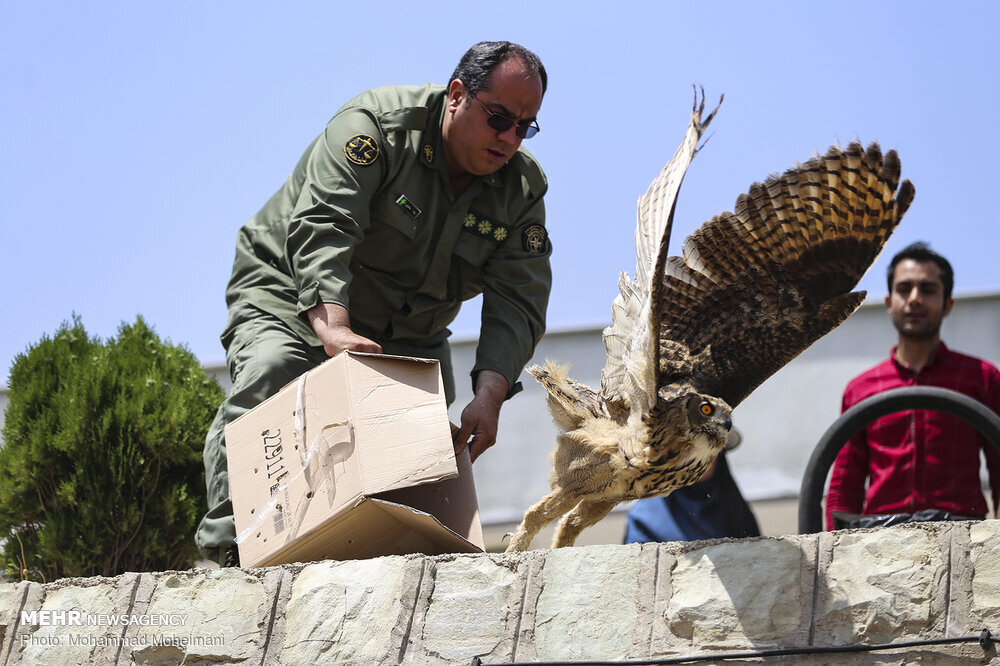200 species of animals released in wildlife

TEHRAN – Some 200 wildlife species have been returned to nature since the beginning of the current [Iranian calendar] year (March 21, 2021) through the wildlife treatment center of Pardisan Park in Tehran.
Pardisan Park’s wildlife clinic has been established with the aim of treating, rehabilitating, and returning to nature the injured and sick species, ISNA reported.
Last week, 25 wild animals were released into their natural habitat, including a fox and 24 golden eagles, steppe eagles, black kites, common buzzards, Eurasian eagle-owls, barn owls, and little owls.
Observance of specialized environmental considerations, including proper nutrition of animals, especially in the days before release, choosing the right time and location to free the species, topography and natural features of the area, as well as suitable weather conditions on the day of the program, marking animals and transporting them in a proper way are among the necessities of wildlife release in nature.
Wildlife species in danger of extinction
There are 1,300 species of animals in the country, 130 of which are endangered and threatened, Hassan Akbari, deputy head of natural environment and biodiversity of the Department of Environment (DOE), said in December 2021.
Asiatic cheetahs, great bustards, Siberian cranes, Persian onagers, and some reptiles and amphibians are among the endangered and threatened species, he said.
Significant smuggling and habitat destruction are the main threats to the species, and promoting a culture of kindness to the environment and strengthening social participation is one of the most important and effective strategies in protecting the environment, he explained.
The availability of large quantities of weapons and ammunition to the poachers is another risk factor for wildlife populations, Akbari added.
Iran has a high diversity of species due to geographical conditions, climatic diversity, huge water resources of the Caspian Sea in the north and the Persian Gulf, and the Sea of Oman in the south.
According to the latest studies, about 1,300 species of vertebrates, including mammals, birds, reptiles, amphibians, and aquatic fish, about 30,000 species of invertebrates, and 8,000 species of plants have been identified in the country.
Unfortunately, over the past two decades, human activities have led to alarming degradation of ecosystems, deletion of genes, species, and biological capabilities; Human threats to biodiversity have accelerated the most over the past 50 years over the entire history of human life.
FB/MG
